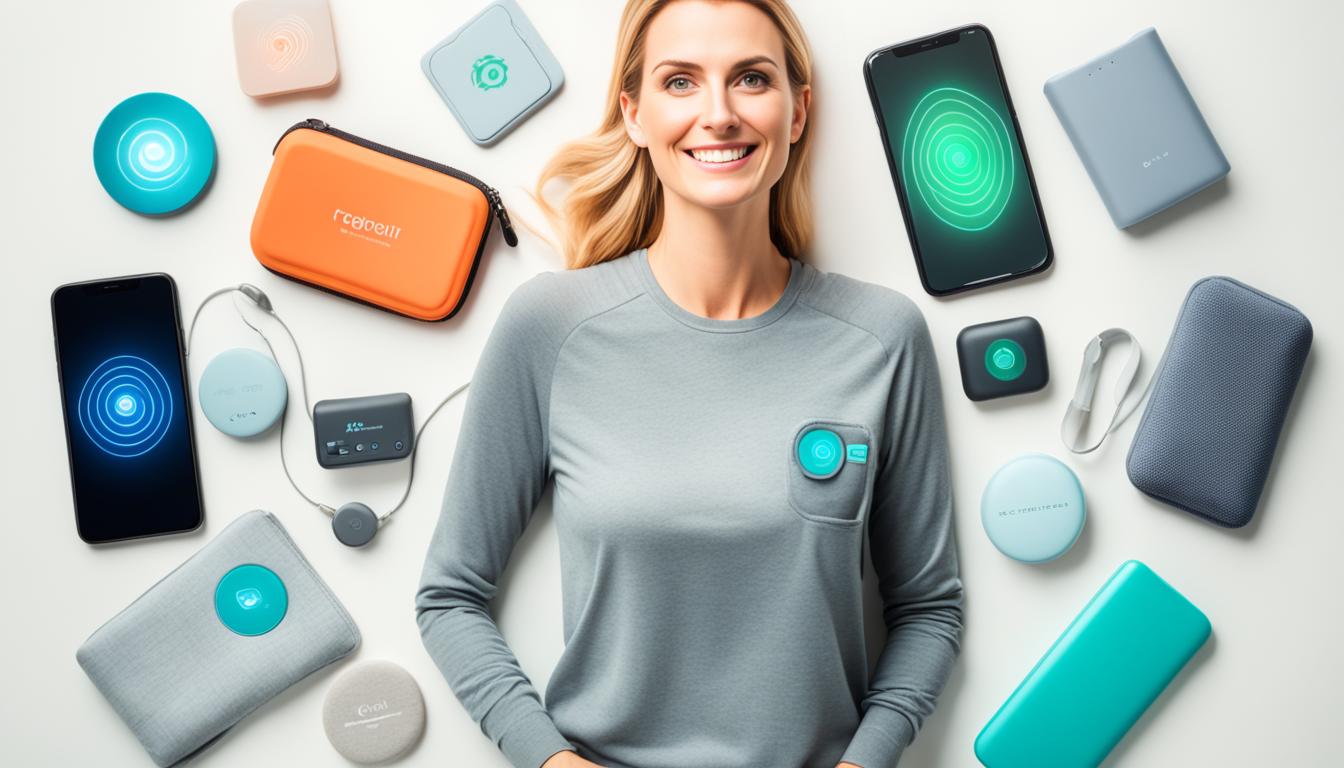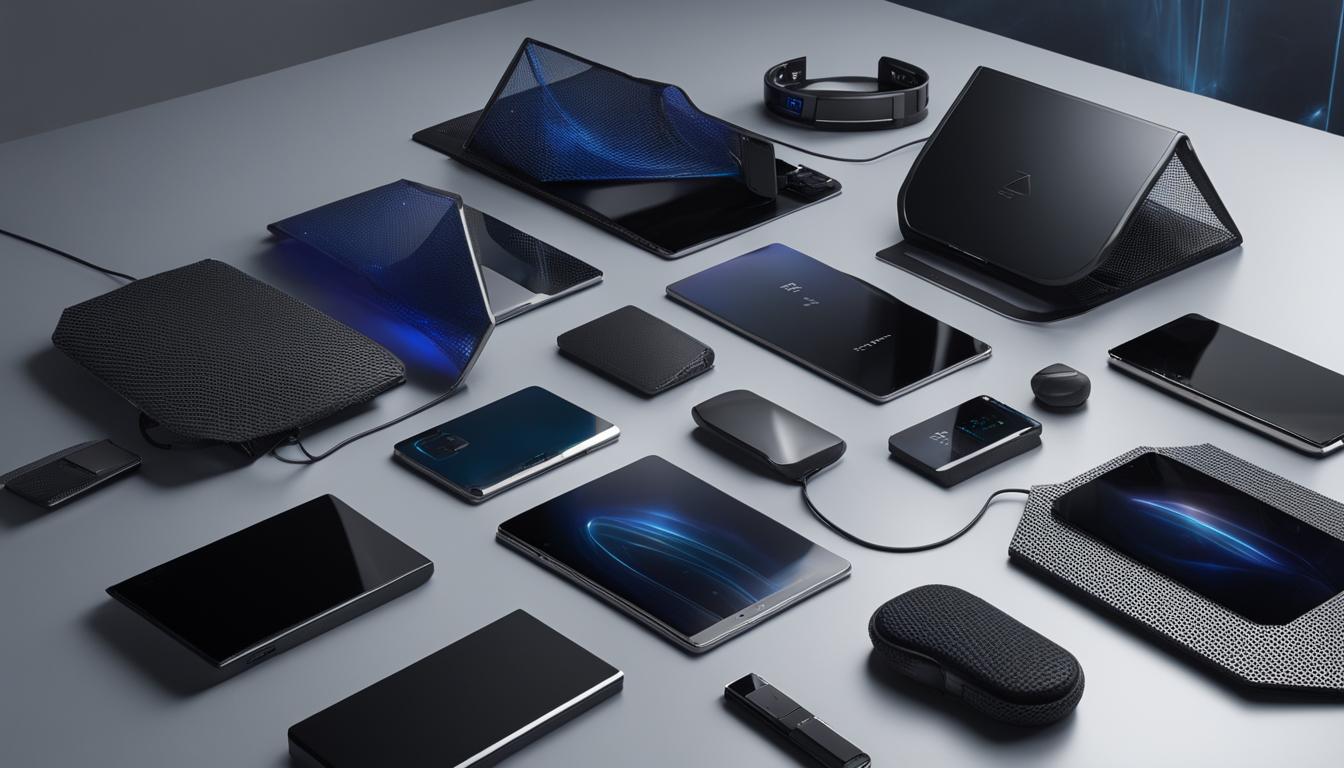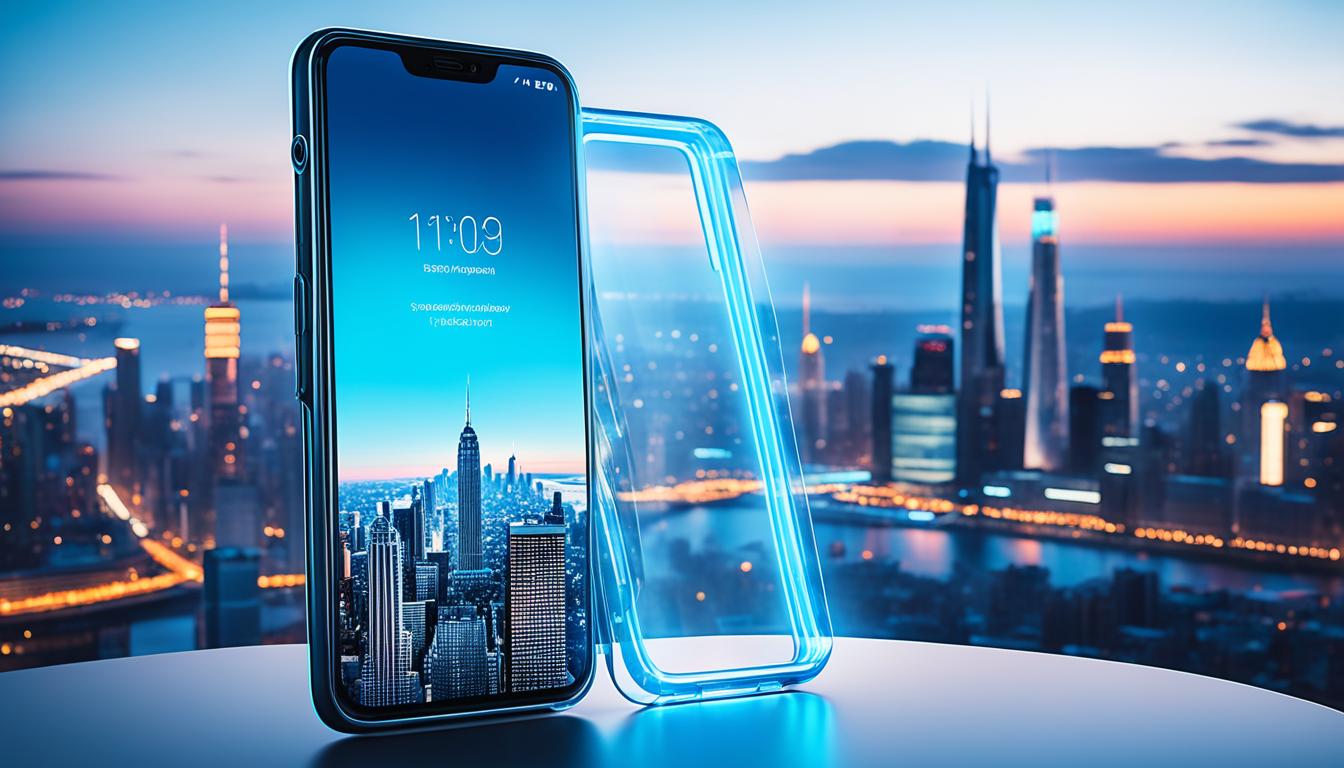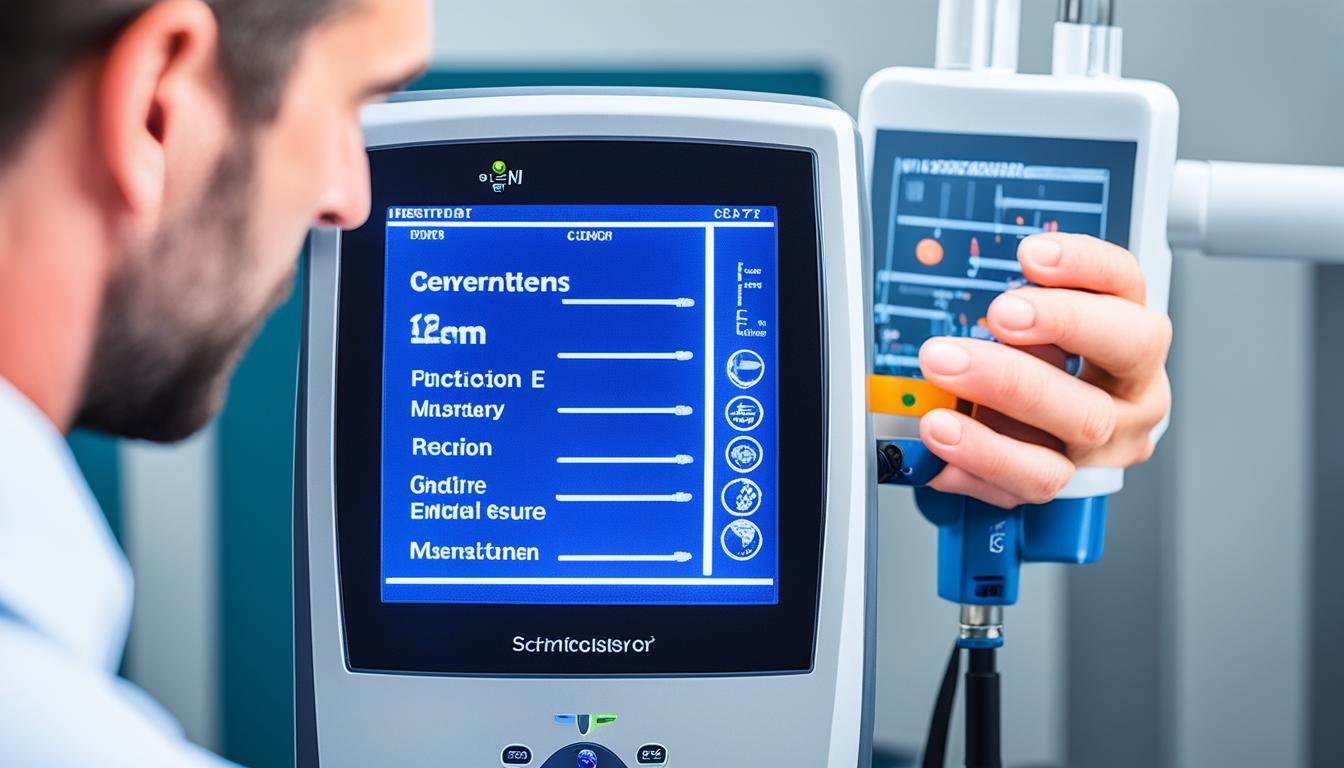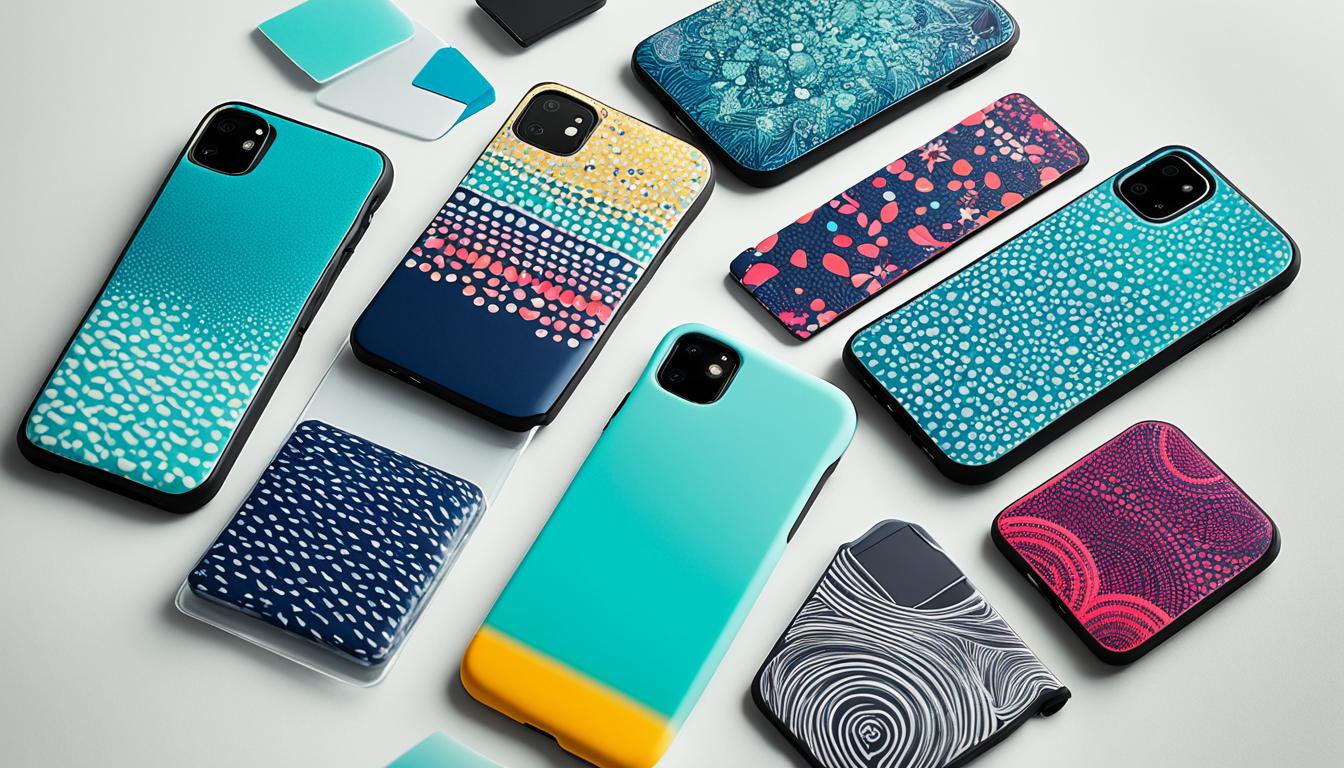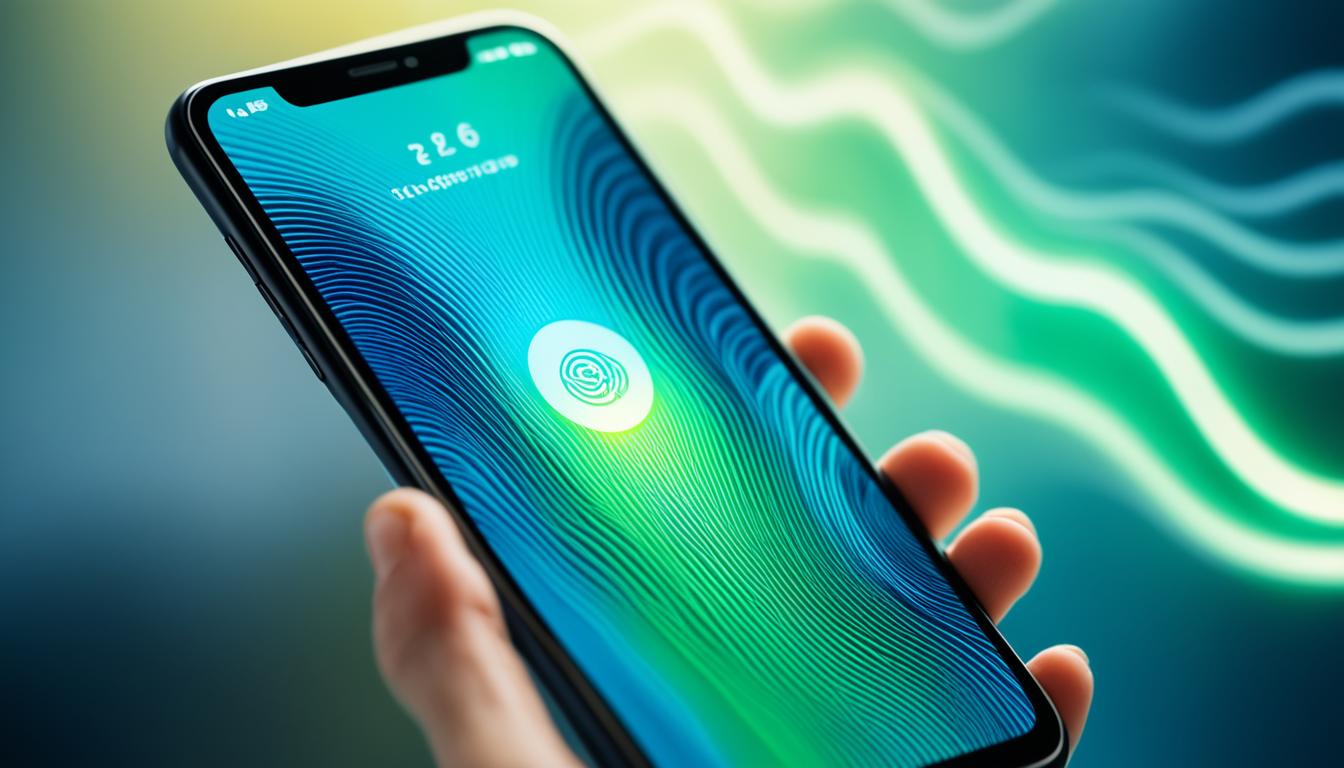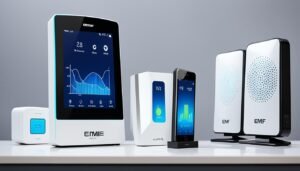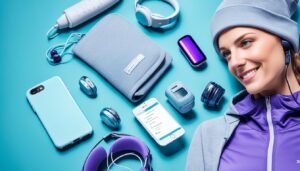Disclosure: This Post Contains Affiliate Links; We earn a commission on purchases.
The rising concerns about the potential health effects of radio frequencies emitted by mobile devices have led to a growing market for EMF protection products. However, not all products deliver on their promises, and some may even increase exposure to electromagnetic frequencies. It is crucial to understand the limitations of product claims and the testing methods used.
Real-world tests have been conducted on popular cellphone cases and garment shielding products, providing valuable insights into their effectiveness in reducing RF emissions. These tests have shown that some products can effectively mitigate RF emissions when used properly. However, it’s important to note that the effectiveness may vary depending on factors such as the cellphone network and the position of the case.
To minimize exposure to RF emissions, it is recommended to maintain distance from the cellphone and limit its use. By incorporating these practices, users can ensure a safer and healthier environment when using mobile devices.
Key Takeaways:
- User-tested cellphone cases and garment shielding products have shown varying effectiveness in reducing RF emissions.
- The effectiveness of these products depends on factors such as the cellphone network and the position of the case.
- Minimizing exposure to RF emissions can be achieved by keeping distance from the cellphone and limiting its use.
- Understanding the limitations of product claims and testing methods is crucial when choosing EMF protection products.
- Using EMF protection products in conjunction with responsible mobile device usage can help create a safer EMF environment.
The Truth About “FCC Certified” Lab Tests
Cell Phone Radiation Scams are a growing concern as more and more people seek protection against potential health risks associated with radio frequencies emitted by mobile devices. To determine the effectiveness of RF shielding products, lab tests are often conducted and products may claim to be “FCC Certified.” However, it is crucial to understand the true implications of these certifications and their relationship to RF-blocking capabilities.
Testing conducted by KPIX 5 has revealed that not all products live up to their claims. While some RF-reducing products can effectively block radiation as advertised, others may actually increase RF emissions and exposure. These lab tests primarily focus on the raw shielding material used in the products, rather than evaluating the products themselves while in use on real-world phones.
Experts caution that the effectiveness of these products can vary significantly in real-world environments due to factors such as cellphone signal strength and other external influences. Consumers must be aware that the “FCC Certified” label does not guarantee the actual RF-blocking capabilities of the products. It is vital to look beyond the certification and thoroughly evaluate products based on independent lab test results and real-life user experiences.
“The ‘FCC Certified’ label primarily refers to the shielding technology used in the product rather than its actual RF-blocking capabilities. Consumers should always rely on independent lab test results and consider real-world usage scenarios.” – Dr. Jane Anderson, RF Shielding Expert
To make informed decisions, it is essential for consumers to conduct thorough research, ask for specific lab test results, and choose RF shielding products that have been independently tested and proven to be effective.
Common Cell Phone Radiation Scams:
- Products claiming to block 100% of radiation without proper evidence
- RF-blocking devices that lack independent lab test results
- Companies promoting unverified claims without scientific basis
It’s important to prioritize consumer safety and ensure that RF shielding products are thoroughly tested and proven effective in real-world scenarios. Rely on reputable brands and independent lab test results to safeguard against potential Cell Phone Radiation Scams.
User-Tested EMF Protection: Real-World Tests
Real-world tests were conducted by KPIX 5 in collaboration with an Electrical Engineer and EMF Specialist, focusing on various cellphone cases and garment shielding products. These tests took place in a San Francisco apartment, representing real-life environments. Three RF meters from Gigahertz Solutions HFE 59B were set at a fixed position next to the iPhone to measure RF emissions.
Baseline readings of ambient RF were recorded before taking measurements of cellphone RF without a case. The objective was to determine the reduction in RF emissions when using different cases and RF reducing products.
The results of the tests revealed that cellphone cases can effectively reduce RF emissions when used correctly. Among the tested cases, flip cases showed the highest reduction in emissions. However, it’s important to note that the effectiveness may vary depending on factors such as the cellphone network and the position of the case.
Additionally, the tests evaluated the effectiveness of garment shielding products. These products also demonstrated a significant reduction in RF emissions when used as directed, providing further options for individuals concerned about exposure.
Comparison of RF Emissions Reduction
| Cellphone Cases | RF Emissions Reduction |
|---|---|
| Flip Cases | High |
| Hard Cases | Moderate |
| Gel Cases | Low |
“The real-world tests conducted by KPIX 5 provide valuable insights into the effectiveness of cellphone cases and garment shielding products in reducing RF emissions. It’s crucial for consumers to understand that proper usage and device positioning play a significant role in achieving the desired results.” – RF Specialist
The Effectiveness of UVC Sanitizers
During the pandemic, UVC sanitizers have gained popularity as a method to eliminate microorganisms on surfaces. These devices utilize ultraviolet light and photonic disinfection to effectively sanitize various objects. However, it’s important to note that the effectiveness of UVC sanitizers can vary based on exposure time and the specific type of device used.
UVC light falls under the category of secondary disinfectants and should be used in conjunction with primary cleaning methods such as soap and water or wiping with a disinfectant. The length of exposure is often a crucial factor in achieving effective sanitization.
Devices that utilize UVC light, such as lamps and wands, may pose health risks if not used properly. Prolonged exposure to UVC light can cause eye damage. Therefore, it’s essential to follow the manufacturer’s instructions carefully and prioritize personal safety.
While UVC sanitizers have shown promise in eliminating microorganisms, it’s important to note that chemical wipes can often be more effective and require less time. Currently, there is limited evidence to support the effectiveness of UVC sanitizers specifically against viruses, including the novel coronavirus (COVID-19).
To gain further insights into the effectiveness of UVC sanitizers, renowned scientist Andrea Armani has conducted extensive research on this topic. Her findings shed light on the benefits and limitations of UVC sanitizers, enabling consumers to make informed decisions regarding their use.
- UVC sanitizers utilize ultraviolet light for disinfection.
- Devices may vary in effectiveness depending on exposure time and type.
- UVC light should be used with other primary cleaning methods.
- Improper use of UVC sanitizers can pose health risks.
- Chemical wipes may offer a more efficient alternative.
- Evidence for UVC sanitizers’ effectiveness against viruses is limited.
Famous Quote:
“UVC sanitizers can be a valuable addition to cleaning routines, but precautions must be taken to ensure they are used safely and effectively.” – Andrea Armani
To further illustrate the points above, here is a comparative table showcasing the differences between UVC sanitizers and chemical wipes:
| UVC Sanitizers | Chemical Wipes |
|---|---|
| Utilize ultraviolet light for disinfection. | Contain chemicals that actively kill microorganisms. |
| Effectiveness can vary depending on device and exposure time. | Typically provide consistent and reliable results. |
| May pose health risks if used improperly. | Safe for most individuals when used as directed. |
| Require longer exposure times for effective sanitization. | Can achieve quick results with minimal effort. |
| Limited evidence of effectiveness against viruses. | Proven to be effective against a wide range of microorganisms. |
It’s crucial to consider these factors when deciding on the most suitable method for sanitizing and disinfecting objects. While UVC sanitizers offer convenience, the use of chemical wipes provides a more efficient and proven solution for eliminating microorganisms.
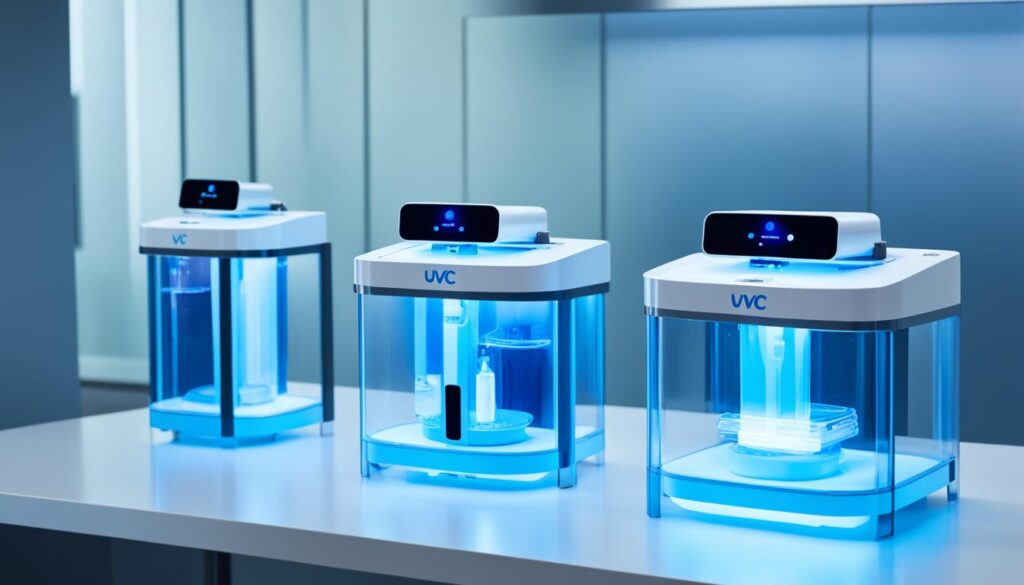
Antimicrobial Materials: Do They Really Work?
Many companies are incorporating antimicrobial agents into their products, such as phone cases and face masks, to reduce exposure to bacteria. These materials work passively and do not require any action from the user. While there is a clear benefit in reducing infections and transmission, there is a lack of evidence to support the effectiveness of these products against viruses such as Covid-19. Proper hygiene practices, mask-wearing, social distancing, and vaccinations are still the most effective methods of preventing infection and spread. It is important to note that chemical methods, such as antibacterial soap, can increase bacterial resistance and decrease the efficiency of the immune response.
The Science Behind Antimicrobial Materials
Antimicrobial materials, also known as nanostructured coatings, contain substances such as silver that have the ability to inhibit the growth and spread of bacteria. These coatings work by releasing antimicrobial agents that disrupt the essential cellular processes of bacteria, preventing their reproduction and survival.
“While antimicrobial materials can effectively reduce bacterial contamination, their effectiveness against viruses like Covid-19 is still inconclusive.” – Dr. Sarah Thompson, Infectious Disease Specialist
Several studies have shown that antimicrobial materials can reduce the bacteria population on surfaces, leading to decreased infection risk. However, when it comes to viral transmission, the effectiveness of these materials remains uncertain. Viruses, including Covid-19, have different structures and mechanisms compared to bacteria, making them less susceptible to the antimicrobial properties of these coatings.
The Importance of Hygiene Practices
While antimicrobial materials can provide an additional layer of protection against bacteria, they should not replace primary infection prevention measures. Proper hygiene practices, such as regular handwashing with soap and water or using hand sanitizers, remain crucial in reducing the spread of not only bacteria but also viruses. Additionally, wearing masks, practicing social distancing, and getting vaccinated are essential for protecting against respiratory infections.
Limitations of Antimicrobial Materials
It is important to understand the limitations of antimicrobial materials when it comes to infection prevention. These materials primarily target bacteria and may have limited effectiveness against viruses. Furthermore, the longevity of their antimicrobial properties can vary depending on factors such as wear and tear, exposure to moisture, and the type of material.
While antimicrobial materials can help reduce infection risk, they should be used in conjunction with other preventive measures rather than relied upon as the sole defense. By combining the benefits of antimicrobial materials with proper hygiene practices, individuals can create a more comprehensive approach to reducing the spread of infections.
| Advantages of Antimicrobial Materials | Limitations of Antimicrobial Materials |
|---|---|
|
|
While antimicrobial materials can provide certain advantages in reducing bacterial contamination, their limitations emphasize the importance of a multi-faceted approach to infection prevention. By combining the use of antimicrobial materials with proper hygiene practices, individuals can create a more comprehensive and effective defense against both bacteria and viruses.

RFID Blocking: Necessary or Not?
RFID-blocking products, such as wallets and bags, are marketed as a safeguard against RFID skimming. This protective measure aims to prevent criminals from using an RFID reader to steal payment information. However, it is essential to assess the actual need for RFID-blocking products in light of the available evidence.
While concerns about RFID skimming exist, there is no documented case in the real world that clearly demonstrates the prevention of such incidents by an RFID-blocking product. The information transmitted by RFID-enabled credit cards is limited, and most credit cards do not transmit the necessary data for credit card fraud. Therefore, the risk of RFID skimming can be effectively mitigated by taking proper precautions at the point of sale.
Renowned cybersecurity expert Roger Grimes explains that RFID-blocking products are not necessary for the vast majority of individuals. He states, “The level of credit card security is already quite high.” Grimes emphasizes that the focus of credit card security should be on other areas, such as protecting personal identification numbers (PINs) and implementing strong passwords.
To enhance credit card security and minimize the risk of potential fraud, it is advisable to adhere to the following recommendations:
- Be cautious while making transactions and ensure no one can visually access your payment information.
- Shield the PIN pad with your hand when typing the PIN.
- Regularly check your credit card statements for any unauthorized charges.
- If you suspect fraudulent activity, promptly report it to your credit card provider.
Overall, the use of RFID-blocking products is not necessary for most individuals. Prioritizing basic credit card security measures and staying vigilant during transactions are key to safeguarding your financial information.
Expert Insight: Roger Grimes on Credit Card Security
“The level of credit card security is already quite high. The focus should be on other areas: protecting PINs and not reusing passwords.” – Roger Grimes
Conclusion
When it comes to EMF protection products, it is crucial for consumers to approach claims with caution and prioritize laboratory test results for verification. In an industry marred by EMF protection scams, it is essential to make informed choices that prioritize genuine protection from electromagnetic radiation.
Lab testing plays a crucial role in assessing the effectiveness of these products. Independent tests and verifiable results are key indicators of a product’s ability to reduce EMF exposure. One such product that has undergone rigorous testing is WaveBlock, which has been proven to significantly reduce EMF emissions.
It is important to note that the effectiveness of EMF protection products can vary based on factors such as the cellphone network and the positioning of the case. However, consumers can proactively minimize their exposure to EMF by increasing the distance between them and their devices and reducing the length of use.
EMR Energy Protection and other trusted brands can provide reassurance to consumers looking for reliable solutions. By prioritizing lab-tested products and implementing smart device usage practices, individuals can take proactive steps towards reducing their exposure to EMF and protecting their well-being.
Source Links
- https://www.wired.com/story/uvc-sanitizers-antimicrobial-cell-phone-radiation-rfid-blocker-tech-scaremongering/
- https://www.cbsnews.com/sanfrancisco/news/emf-blocking-products-real-world-test-cellphone-cases-blankets/
- https://www.waveblock.com/blogs/emf-radiation-protection/is-are-emf-protection-stickers-a-scam

Subscribe to Our Newsletter

